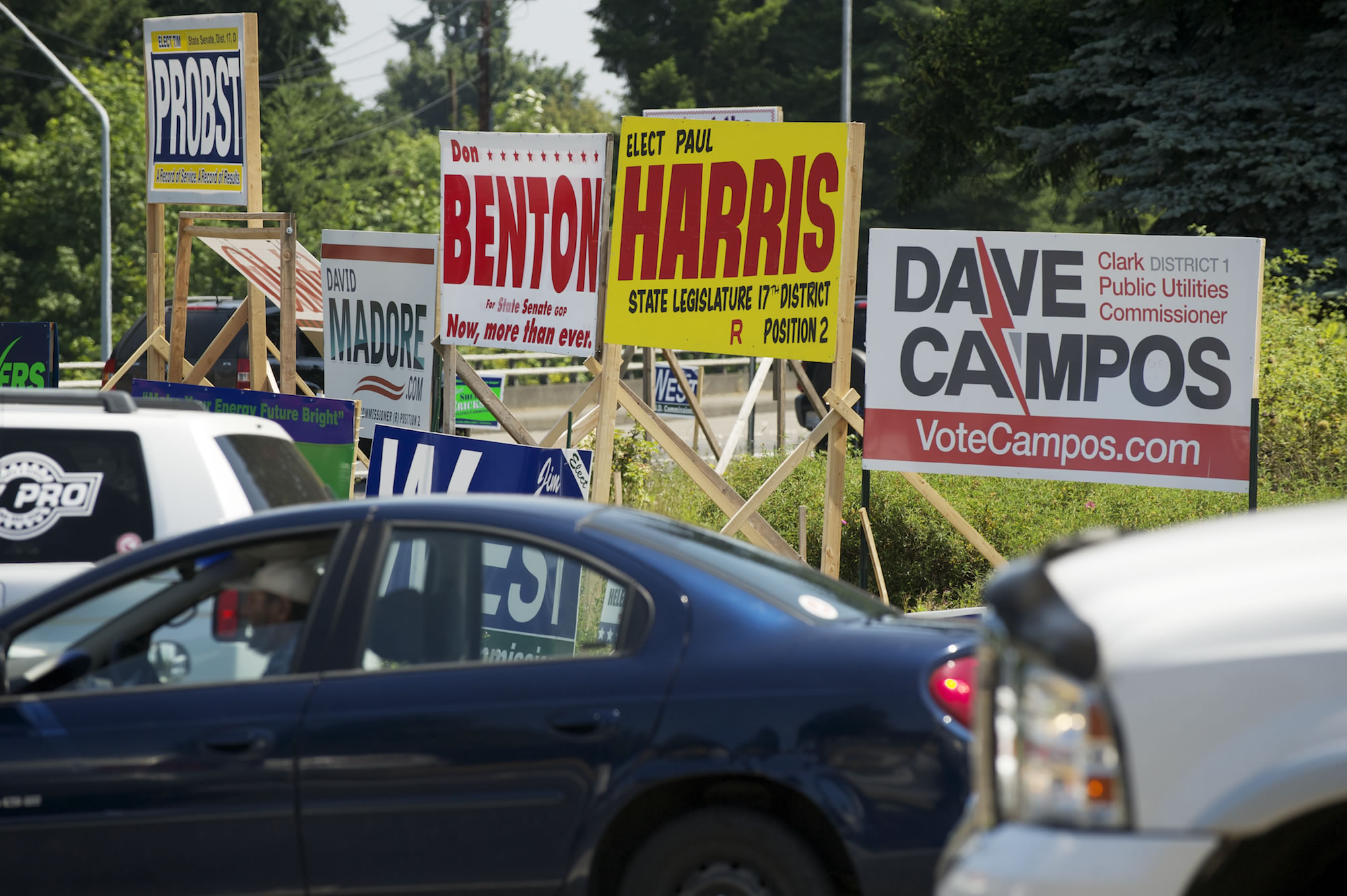Every year, candidates and volunteers put up hundreds of campaign signs. Every year, some are stolen.
Rep. Sharon Wylie, D-Vancouver, said someone stole $4,000 worth of her campaign signs last summer. They were later found by firefighters — the signs had been used to make a backyard shed.
Wylie chose not to take any action, and she said she hasn’t had any trouble this year.
Kim Kapp, spokeswoman for the Vancouver Police Department, said the department hasn’t received any recent reports of vandalized or stolen signs, but the offense would likely be classified as malicious mischief.
Sen. Ann Rivers, R-La Center, said stolen signs have been a big problem for her this year. Seven 2-by-4 signs and countless yard signs have been stolen, she said.
“I’ve been doing this long enough to know that it will happen every year,” she said. “I’m a firm believer in sign karma. In the long run, it will result in negative things for the other person.”
Rivers said she has seen an uptick in damage to signs lately. She said she will repair and restore any damaged campaign signs she sees, regardless of party affiliation.
“We have to work together to take care of these signs,” she said.
In addition to worrying about stolen signs, candidates and their volunteers have to comply with a
wide range of rules. Clark County, the Washington State Department of Transportation and the state’s Public Disclosure Commission all have rules that dictate where signs can be placed, as well as sign content.
Paul Scarpelli, code enforcement manager for Clark County, said candidates must register with the county before putting signs up. The signs cannot block crucial lines of sight for drivers or pedestrians, and they must be placed at least 10 feet back from curbs or pavement edges, he said.
Candidates and campaign volunteers must collect the signs within 15 days after the election.
Alice Fiman, communication specialist for the WSDOT, said political signs are not allowed in the right-of-way along highways. Sometimes new candidates or volunteers are not familiar with this rule, which is why the department has begun reaching out to candidates, telling them where they can place signs.
“We try our best to educate people,” she said. “There are certain places where we always have problems. … It comes down to a safety issue — the right-of-way is there for a reason.”
Signs are allowed on private property, but anything visible from a state highway must be no larger than 32 square feet, Fiman said. Candidates must remove signs within 10 days of the election.
Lori Anderson, communications officer for the Public Disclosure Commission, said the commission’s primary requirement for candidates running for partisan office is that they include their party affiliation. Also, signs larger than 32 square feet must include the sponsor’s name.
Anderson said the office gets a lot of complaints about signs that don’t comply with the regulations. Everyone gets one warning, she said. After that, the office files a complaint, and candidates can be fined as much as $500. But this doesn’t happen very often.
“Candidates don’t want to create bad publicity,” she said.



